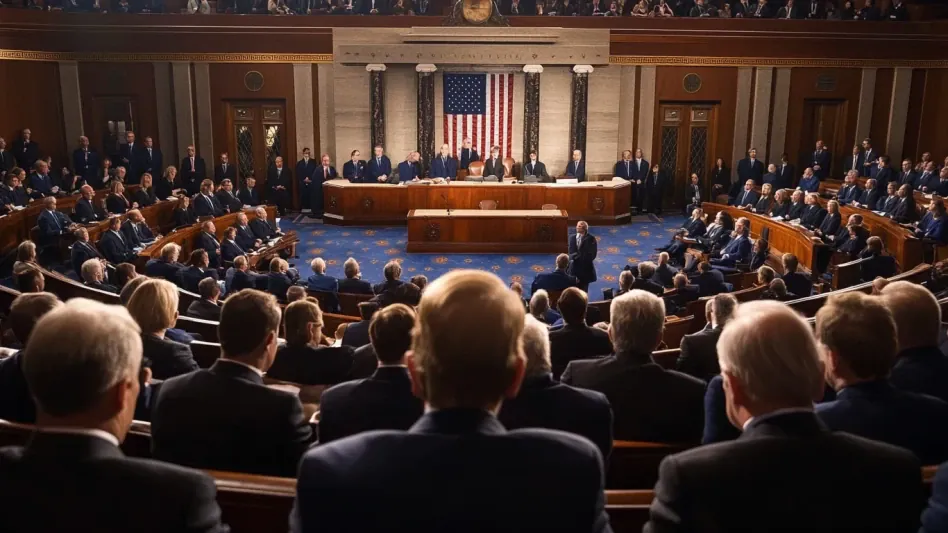Recent legislative actions have brought Medicaid to the forefront of political discourse. Rep. Nick LaLota (R-N.Y.) has endorsed a House budget resolution, claiming it aims to protect key social programs like Medicaid, Social Security, and Medicare. However, the details of the resolution suggest otherwise, raising significant concerns about potential impacts on Medicaid funding and services.
Rep. LaLota’s Claims and Legislative Actions
Lawmaker’s Assurances
Rep. Nick LaLota has assured his constituents that the budget resolution he supports will safeguard essential programs, including Medicaid. His statements are intended to reassure the public that the necessary federal spending cuts will not compromise these vital social safety nets. LaLota’s rhetoric emphasizes cutting down on fraud, waste, and abuse, framing the resolution as a prudent fiscal strategy that shies away from impacting critical health services for low-income populations.
Nevertheless, these assurances face scrutiny against the backdrop of the proposed budget resolution. Critics argue that while the intention might be to protect Medicaid, the implementation may inadvertently or indirectly affect the program. This dissonance between stated objectives and the actual text of the budget resolution has prompted a closer examination by policy analysts and political observers alike. The gap between LaLota’s assurances and the legislative reality underpins much of the current debate and public concern.
Scrutiny of Official Budget Proposal
The budget resolution endorsed by Rep. LaLota tasks the House Committee on Energy and Commerce with identifying ways to slash the federal deficit by $880 billion over the next decade. This massive reduction target inevitably places Medicaid under the microscope because it constitutes a substantial portion of the committee’s budgetary responsibility. Consequently, the feasibility of achieving such significant cuts without affecting Medicaid services and funding is highly debatable.
Experts in fiscal policy and health economics suggest that it is nearly impossible to achieve the mandated deficit reduction without substantial cuts to Medicaid. Given that Medicaid accounts for 93% of the committee’s jurisdictional spending, any significant budget trimming likely means reduced funding and resources for the program. This connection between the resolution’s fiscal objectives and potential impacts on Medicaid has led to widespread unease among Medicaid recipients, healthcare providers, and political opponents who view this as an imminent threat to essential healthcare services for millions of Americans.
Potential Impacts on Medicaid Funding
The Scale of Proposed Cuts
The immense scale of the proposed budget cuts raises alarms about their practicality and potential damage to Medicaid. With Medicaid representing the bulk of the spending under the committee’s purview, achieving $880 billion in reductions becomes a formidable challenge. Policy experts argue that meeting this target without significantly affecting Medicaid is implausible, given the program’s extensive funding requirements. The fear is that substantial downsizing of Medicaid services and funding is not just a possibility but a likelihood.
Analysts emphasize that the sweeping nature of these cuts could lead to catastrophic reductions in Medicaid coverage, affecting millions of low-income individuals reliant on the program for healthcare. Such breadth of spending cuts could result in restricted eligibility, fewer benefits, or reduced payments to providers, directly impacting the quality and scope of care available to Medicaid beneficiaries. These potential ramifications bring to light the extent of the budget resolution’s possible consequences, challenging the notion that the cuts could be achieved without severe repercussions for Medicaid.
Consequences for Enrollees and Providers
The anticipated cuts threaten to compromise coverage for millions of Medicaid enrollees, leading to reduced benefits and limitations on accessible services. Medicaid primarily supports low-income residents, the elderly in nursing homes, and individuals needing long-term care, making any cutbacks particularly detrimental. The cascading effect of diminished Medicaid funding could extend to healthcare providers who depend on Medicaid payments, potentially disrupting service delivery and financial stability for various healthcare institutions.
Enrollees, especially those with chronic conditions, could face restricted access to necessary treatments and prescriptions. Providers might have to navigate decreased reimbursement rates, influencing their ability to offer comprehensive care and maintain their practice operations. The broad impact on both patients and providers underscores the potential for systemic challenges within the healthcare system. As such, the extensive consequences of the proposed budget cuts extend beyond just numbers on a ledger, touching on the lives and wellbeing of countless Americans.
Public and Political Reactions
Divergent Views on Medicaid Protection
Public sentiment and political reactions to the budget resolution have revealed stark divisions. While Rep. LaLota emphasizes that fraud and waste eliminations will buffer Medicaid from the deepest cuts, critics argue that the magnitude of the proposed reductions far surpasses what can be achieved through administrative efficiencies alone. President Biden, among other political figures, has expressed grave concerns over the adverse implications for Medicaid beneficiaries if the resolution is implemented as drafted.
Critics contend that reducing Medicaid funding to the extent proposed would inevitably harm enrollees, directly contradicting LaLota’s assurances. The executive branch and various policymakers have raised alarms about the potential harm, highlighting the discrepancy between LaLota’s narrative and the practical realities of budgetary constraints. This discord has fueled intense debates and protests from those advocating to shield Medicaid from such draconian measures.
Broad Public Support for Medicaid
Public opinion further complicates the political landscape for implementing these cuts. KFF tracking polls consistently show large-scale support for Medicaid, emphasizing its importance among the American populace. This robust public backing enhances the political complexity for anyone advocating significant cutbacks, as elected representatives must consider the potential backlash from voters who perceive these cuts as threats to their healthcare security.
This broad public support also provides leverage to opponents of the budget resolution, bolstering their arguments against proposed reductions. As a result, political leaders navigating this contentious issue find themselves balancing fiscal policies with constituent expectations and electoral repercussions. Public opposition, underscored by these polls, reflects a broader apprehension that maintaining adequate Medicaid funding is imperative to ensuring comprehensive healthcare coverage for vulnerable populations.
Policy Alternatives and Challenges
Potential Cost-Saving Measures
Various cost-saving measures have been explored to mitigate the need for severe cuts to Medicaid. Proposals such as implementing work requirements for Medicaid eligibility, capping federal spending, reducing federal matching dollars, and eliminating provider taxes are among the suggested strategies. However, each of these measures carries its own set of challenges and potential consequences, particularly for state budgets, which might bear an increased burden as a result.
Implementing work requirements, for example, could result in many beneficiaries losing coverage, while capping federal spending might shift more financial responsibility to states, potentially worsening state deficits. Reducing federal matching dollars could lead states to cut back on Medicaid services, limiting access to healthcare for enrollees. Each policy alternative, while aiming to control costs, entails significant trade-offs that could adversely affect Medicaid coverage and service delivery, pushing the financial strain onto state governments and vulnerable populations.
Long-Term Effects and Political Implications
The long-term effects of the proposed budget cuts pose substantial risks not just to individual beneficiaries but to the broader public health safety net. Policy analysts and healthcare advocates stress that significant Medicaid reductions could lead to increased healthcare disparities, poorer health outcomes, and greater financial strain on both individuals and state healthcare systems. This underscores the critical role Medicaid plays in maintaining public health and highlights the stakes involved in altering its funding structure.
Politically, the resolution represents a flashpoint in the broader debate over fiscal policy and social safety nets. Proponents argue for fiscal responsibility and reducing national debt, while opponents emphasize the moral and practical necessity of supporting vital health programs like Medicaid. The resolution’s advancement reflects broader ideological divides, and its potential enactment could have far-reaching implications for healthcare policy and public welfare. Rep. LaLota’s assurances, juxtaposed against expert analysis and public sentiment, demonstrate the intricate balance lawmakers must strike in addressing both budgetary constraints and constituent needs.
Legislative and Public Dialogue
Recent legislative actions have propelled Medicaid into the spotlight of political discussions. Rep. Nick LaLota (R-N.Y.) has thrown his support behind a House budget resolution, asserting that it aims to safeguard vital social programs like Medicaid, Social Security, and Medicare. LaLota emphasizes that the resolution’s purpose is to ensure these essential programs remain intact and well-funded. However, a closer examination of the resolution points to disparities between its stated goals and the specifics outlined within. The fine print raises serious concerns about the potential impact on Medicaid funding and services, suggesting that the protection of these programs might not be as comprehensive as LaLota claims. Critics argue that the resolution could lead to cuts or restrictions that would undermine Medicaid’s ability to provide for vulnerable populations. As the debate continues, the true implications of the resolution for Medicaid and other social programs remain a contentious issue.









